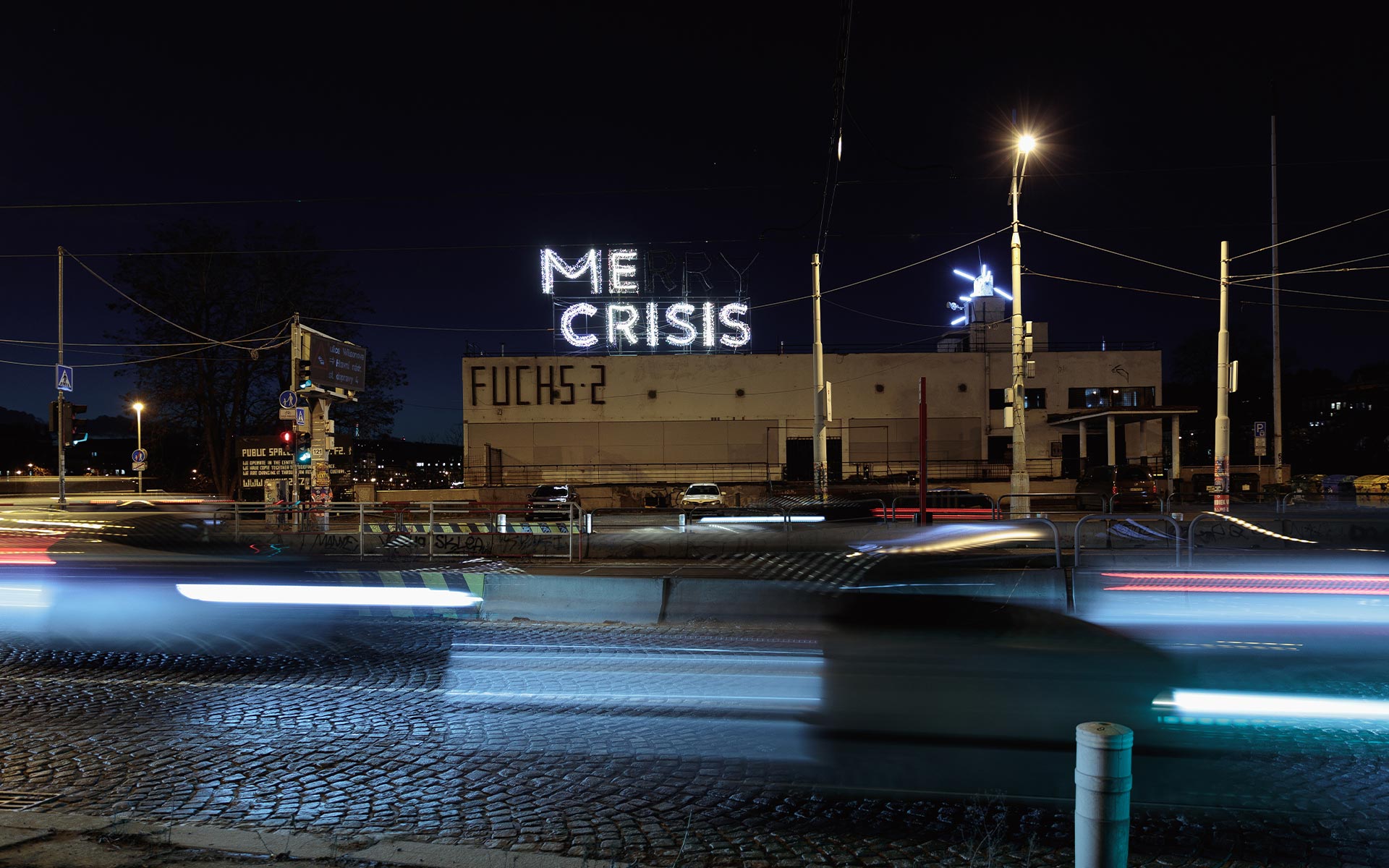The gradually collapsing neon sign MERRY CRISIS (art inslation) does not force us to start changing anything, it does not serve as an activator of resistance or activism. In the daily traffic jams that many of us experience when passing by the Fuchs2 building in Prague, this inscription unreservedly forces us to experience the ongoing end of the world on an individual basis.
The Christmas season is presented as a carefree period of joy associated with gift shopping and end-of-year celebrations. The constant advertising pressure, both on social media and in public space through illuminated advertisements and billboards, makes us forget about personal and social problems and, slightly dazed, transports us to the reality of the next year.


The overexposed theme of the environmental crisis and all the other local and personal ones comes along with the sobering of the new year. The social and public mood is comparable to the state of the streets and the garbage collection points on their corners. Hangovers accompanied by a convoy of cars caused by yet another blockade of the streets due to the climate become the colour of the journey to work.
In the same way that the apocalypse was part of everyday life in the Gothic era, and Jesus as saviour in the form of a helpless crucified body covered in blood and powerlessness, today we encounter the end of the world in the everyday, and our saviour is reduced to the motifs of a burning planet. The gradually collapsing neon Merry Crisis sign does not force us to start changing anything, it does not serve as an activator of resistance or activism. In the daily traffic jams that many of us experience as we pass by Fuchs, this sign unreservedly forces us to experience the ongoing end of the world on an individual basis.
We applied the actual crushed charcoal to the partial varnish of the charcoal photograph. Thus, black smudges remain on the reader’s fingers once touching the book cover. Our aim was to support the authenticity of his experience in contact with the book.

We also created riso-print posters in a quantity of 50 pieces.
We applied the actual crushed charcoal to the partial varnish of the charcoal photograph. Thus, black smudges remain on the reader’s fingers once touching the book cover. Our aim was to support the authenticity of his experience in contact with the book.



As time goes on, we turned off some lights after Christmas, but the crisis has not left us.


co-authors Lukáš Procházka and Josef Frühauf
> gallery F2 LOOK UP
> photos by Libor Galia
